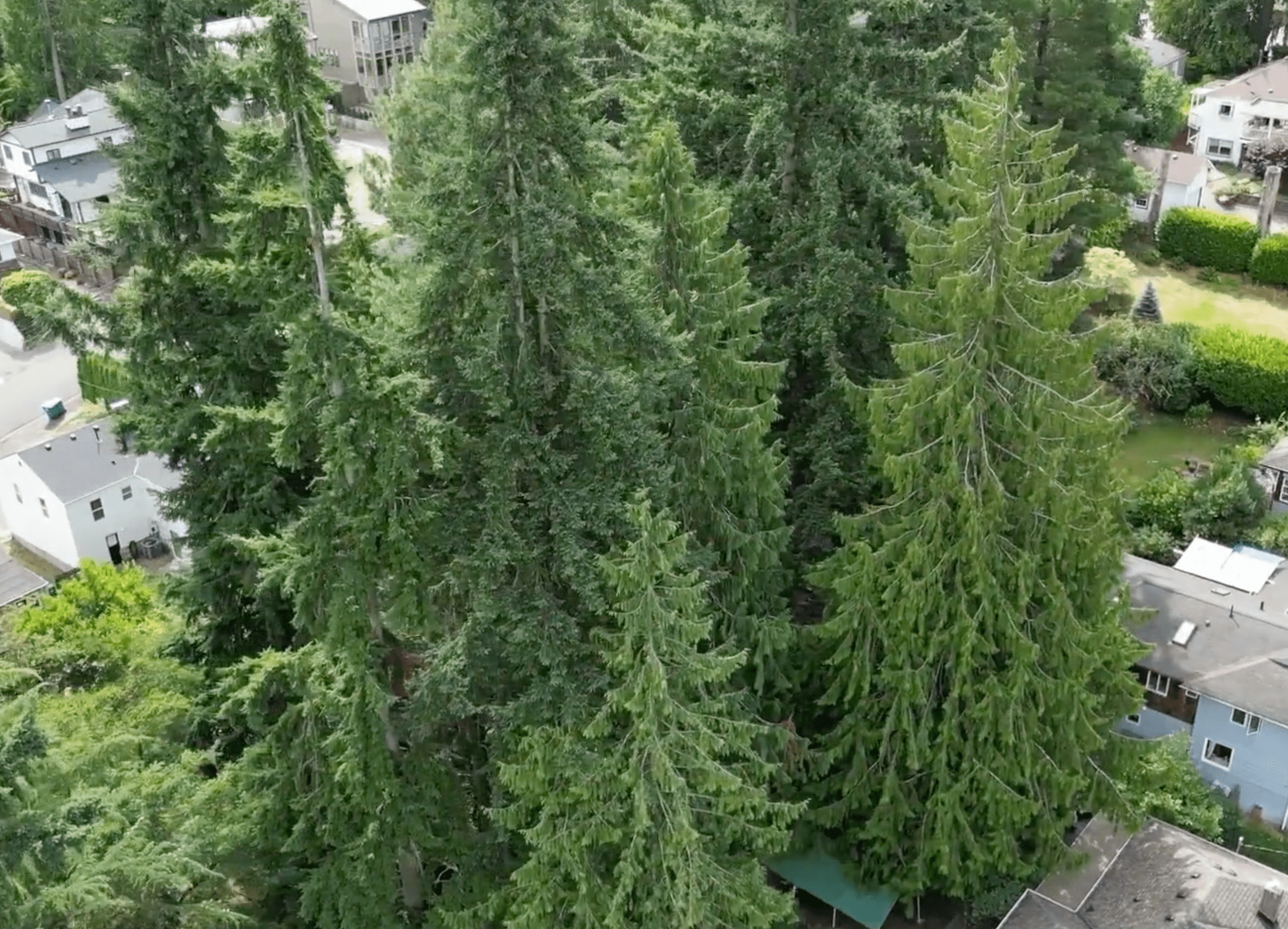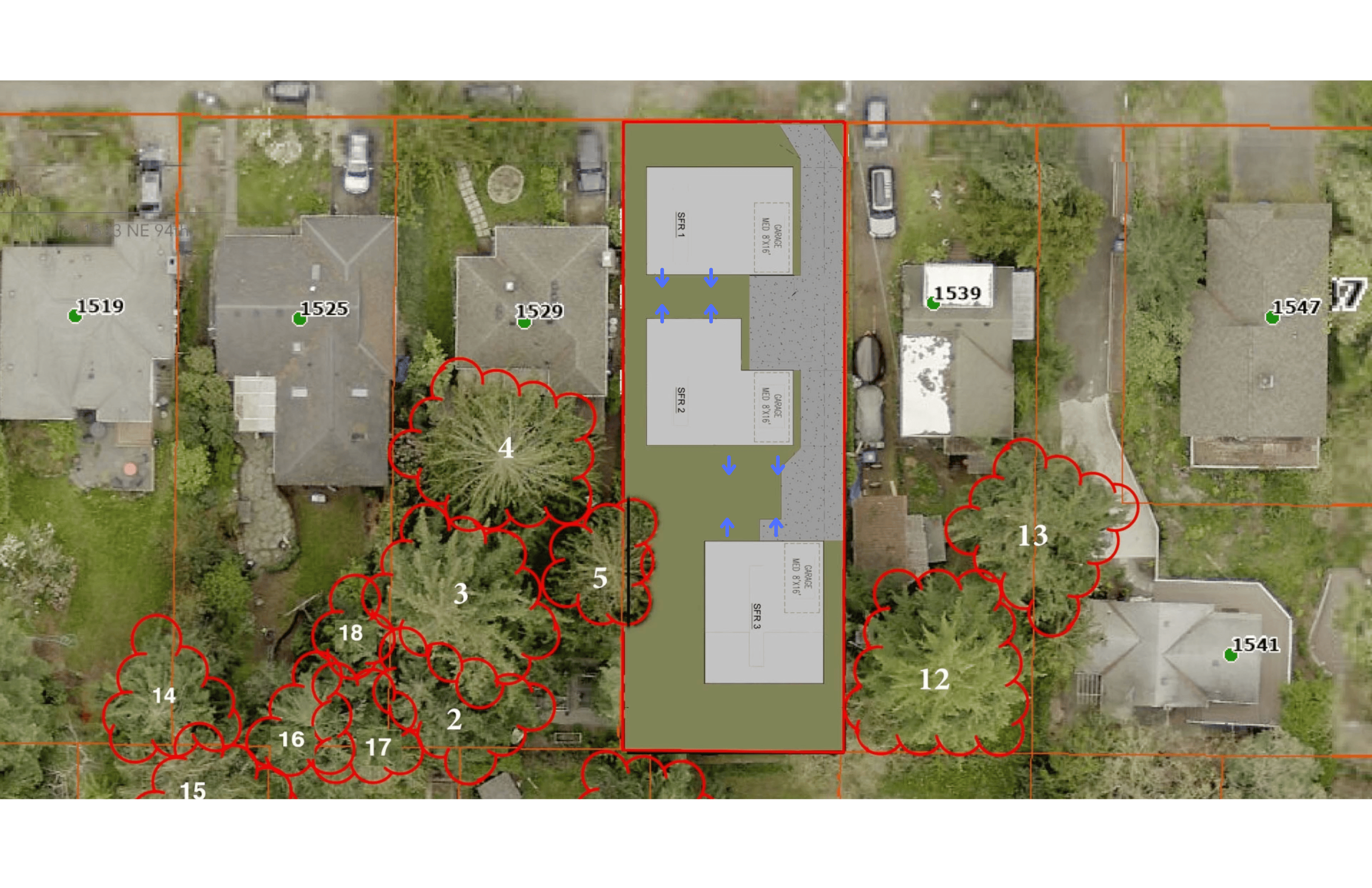

The heart of one of Maple Leaf’s largest Mother Groves (page 2) may be clearcut.
The City of Seattle’s definition of a grove is eight trees with trunks at least 12-inches in diameter, with a contiguous canopy. But Maple Leaf’s Mother Groves are super-groves. They contain as many as 60 trees, span most of the properties on their blocks, and function much like intact native Pacific Northwest ecosystems.
They are reservoirs of biodiversity for iconic native species relying on forests to survive. Aerial views show about 22 of them in the Maple Leaf neighborhood, making Maple Leaf a rare habitat in Seattle!
Greencity is not hiding their intent. The first sentence on their application is:
“There are Tier 2 trees on the site that will keep the project from achieving the maximum lot coverage permitted. We would like verification and information on the process for tree removal.”
Greencity plans to use Seattle’s artificially large “tree protection area” loophole to clearcut every tree. And they’re counting on Seattle’s building department (SDCI) to approve their Lot Sprawl plan, which intentionally spreads structures to the edge of the lot and removes all trees. It’s a waste of space, but it results in higher sales prices on the new houses, bigger profits for the developer, and more revenue for SDCI. Even though this loophole was closed by Amendment 102, this project will be grandfathered in.
Simply moving two of these structures together with one shared wall would save most of the trees:

Groves work as mutual aid networks for their individual trees—sort of like a tree trade association. Trees in groves are resilient and much less likely to decline and become hazard trees. Growing together, trees take care of each other in a few key ways:
Removing large trees always results in a loss of its public health and ecological benefits, but if those trees are removed from within a grove, the loss is magnified exponentially and can result in the eventual loss of the entire grove. With a key large tree gone, formerly sheltered trees are exposed to the elements, and no longer have the support of interlocking roots and the fungal network. As those trees decline and become hazard trees, they must also be removed. Eventually the grove is gone, usually replaced with small ornamental trees which supply a tiny fraction of the former grove. For this reason Seattle classifies groves as Tier 2 (protected), above and beyond individual trees.
Most people in Seattle enjoy trees, and most people think they’re protected. They couldn’t be more wrong.
Please help us save this grove and spread awareness of what’s really happening. It’s the most powerful way to grow our community’s numbers and voice, and you can help in two specific ways:
To: Bruce.harrell@seattle.gov, Debora.juarez@seattle.gov, Sara.nelson@seattle.gov, Alexismercedes.rinck@seattle.gov, Branin.burdette@seattle.gov, luis@greencitydev.us, Sales@greencityhomes.us, Office@greencitydev.us, Jordan.morrison@greencitydev.us, Micaela@hdltcollaborative.com, andrey@greencitydev.us, Diane.rayo@windermere.com, Ian@windermere.com
Subject: Please Save the 94th Street Mother Grove
Dear Mayor Harrell, City Councilmembers, SDCI Planner Burdette, and Greencity development and sales team,
I am reaching out to ask you to protect the Maple Leaf Mother Grove on NE 94th Street. The heart of the grove at 1533 NE 94th St is proposed for clearcutting, even though simply clustering the structures closer to the center of the lot could save nearly every tree.
The 94th Street Grove is one of only 22 remaining supergroves in Maple Leaf, which protect all of Seattle from flooding and much of the north end from summer heat waves. These groves provide exponentially greater community benefits than the same number of trees dispersed across streets and yards.
With simple site design changes, new housing can coexist with these trees. Seattle doesn’t need to lose its climate resilience while making space for new neighbors. Please save the 94th Street Mother Grove.
Thank you,
[Your Name]
